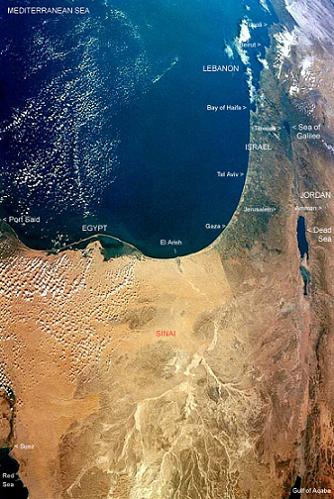Part two of the article "Precision agriculture in the 21st century will bring about a revolution similar to drips in the 20th century" - Dr. Eli Potivsky, head of the Agricultural Research Administration in an interview with "Mashov"
By: Amos de Winter, editor of the monthly "Feedback to Agriculture"

As mentioned, around the world different teams are working on the same topic: remote sensing of agricultural crops, irrigation control and water flow sensing from space, while the most advanced in the world on this topic are the European, Japanese, American and, as mentioned, Israeli teams. The Russians are also making progress on this issue, but Russia is currently suffering from a serious problem of lack of budgets.
Just this week, the Europeans published a joint study that they carried out in the La Manche region, in Spain (the well-known region of our informant, Don Quixote), on the development of a new sensing device, which is capable, based on the color of the leaf of the agricultural crop, to check the state of the photosynthesis process, (the degree of fluorescence in the leaf) , information that is able to quantify the ability of that growth to absorb carbon dioxide. The scientists make use of satellites: ASTER, MODIS, LANDSAT, and different spectrometers are used, for example: a medium resolution simulator (MERIS) of Envisat (ENVISAT, a French satellite), a radio sensor for long waves, a high resolution sensor, ranging from visible light to near infrared , synthetic radar and many other sensors.
The European team consists of 16 scientists from across Europe, using light aircraft as satellite launchers. The University of La Manche donated its facilities and laboratories for the analysis of the daily findings. The Spanish Aviation Agency donated flight hours, 3 planes and pilots, the La Manche Agricultural Research Institute donated its fields and research for the project, the European Space Agency, which finances the project, donated satellite photos, sensing devices and development budgets and in short: it is a cooperation of parties many, without whom the project would not have been realized.
It should be understood that Israel has exactly the same capabilities and in some even better ones, especially among the defense industries. When it comes to preparing for war, suitable budgets will always be found. The problem is to locate development budgets for peace projects, which promote a vision such as advanced agriculture, in a project that, as mentioned, has enormous economic potential. This is a project in which the Israeli Space Agency should be a partner; Israel Aerospace Industries; Raphael; Al-Op or another company dealing with sensing means; Ministry of Science; Ministry of Agriculture; The universities in Israel (Remote Sensing Department in the Geography Department of Ben-Gurion University), the farmers in the field, the Volcanic Institute, the Air Force, etc. Without cooperation between many different parties in Israel, the project will not succeed and this has already been realized in other countries.
The satellite that Israel is developing with the French, the first of its kind in the world, is able to focus from space on an area of land measuring only five square meters, on 12 different channels that will test different parameters in crops. It is supposed to pass over the slide once every two days, which will enable close monitoring of changes in the ground and an immediate response. The satellite will be specially adapted to branches such as harvest, GDS crops (cotton, grain, fodder) and will be used as a tool for directing tractors in the open field, tracking and identifying cattle, individual breeding in the dairy farm, including robotic milking and orchards. Dr. Victor Elhanati and Dr. Yipit Cohen are in charge of the project on behalf of the Agricultural Research Administration.

2 תגובות
Levin Venus does have a very large potential to streamline a variety of operations in agriculture in general, and precision agriculture in particular, but unfortunately the detail that appears in the article is not relevant and not even fundamentally true. I suggest looking at:
http://www.agri.gov.il/AGEN/AgenInfo.html
Victor
It's a shame you didn't mention the most comprehensive article written so far on the subject of the Hanus satellite:
http://www.isracast.com/Articles/Article.aspx?ID=4
Ido